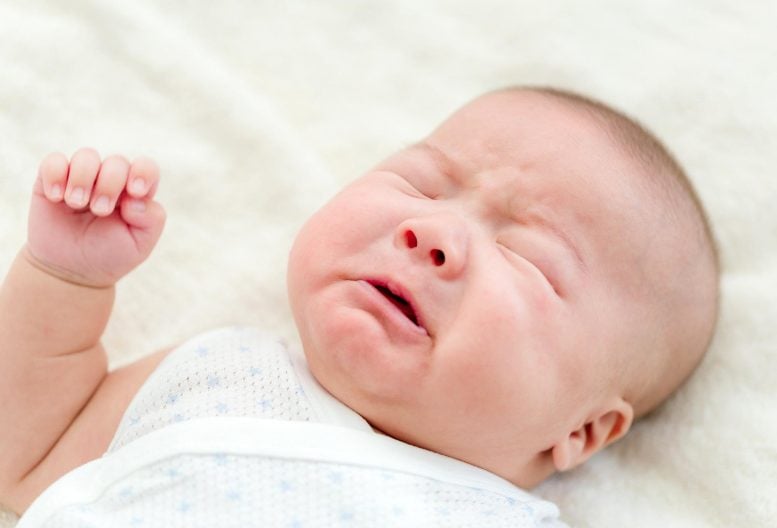According to scientists, the best way to calm down a baby is to take them on a 5-minute walk.
The majority of parents have been frustrated by their babies’ excessive crying and refusal to sleep. According to recent research, holding them for five minutes and walking with them is the most effective method for calming them down. This evidence-based soothing method is detailed in a paper recently published in Current Biology.
“Many parents suffer from babies’ nighttime crying,” says corresponding author Kumi Kuroda of the RIKEN Center for Brain Science in Japan. “That’s such a big issue, especially for inexperienced parents, that can lead to parental stress and even to infant maltreatment in a small number of cases,” she says.

What action soothes crying infants the best? Scientists now have an answer. Credit: Current Biology/Ohmura et al.
Kuroda and her colleagues have been researching the transport response, an innate reflex exhibited in many altricial mammals, including mice, dogs, monkeys, and humans, whose offspring are immature and unable to care for themselves. They discovered that when these animals pick up their newborns and begin walking, their young’s bodies become docile and their heart rates decrease. The goal of Kuroda’s team was to compare the effects of the transport response—the relaxed response while being carried—with those of other situations, such as motionless maternal holding or rocking. They also wanted to determine whether the effects persist with longer carrying in human infants.
The researchers examined the reactions of 21 newborns while they were in four different situations: being carried by their walking mothers, being held by their sitting mothers, resting still in a crib, or sleeping in a rocking cot. The research team discovered that after 30 seconds of the mother walking with the baby, the crying newborns’ heart rates decreased and they stopped crying. When the babies were put in a rocking cot, a similar soothing effect occurred, but not when the mother held the baby while seated or laid the baby in a still crib.
This suggests that holding a baby alone might be insufficient in soothing crying infants, contradicting the traditional assumption that maternal holding reduces infant distress. At the same time, movement has calming effects, likely activating a baby’s transport response. The effect was more evident when the holding and walking motions continued for five minutes. All crying babies in the study stopped crying, and nearly half of them fell asleep.
But when the mothers tried to put their sleepy babies to bed, more than one-third of the participants became alert again within 20 seconds. The team found that all babies produced physiological responses, including changes in heart rate, that can wake them up the second their bodies detach from their mothers. However, if the infants were asleep for a longer period before being laid down, they were less likely to awaken during the process, the team found.
“Even as a mother of four, I was very surprised to see the result. I thought baby awoke during a laydown is related to how they’re put on the bed, such as their posture, or the gentleness of the movement,” Kuroda says. “But our experiment did not support these general assumptions.” While the experiment involved only mothers, Kuroda expects the effects are likely to be similar in any caregiver.
Based on their findings, the team proposes a method for soothing and promoting sleep in crying infants. They recommend that parents hold crying infants and walk with them for five minutes, followed by sitting and holding infants for another five to eight minutes before putting them to bed. The protocol, unlike other popular sleep training approaches such as letting infants cry until they fall asleep themselves, aims to provide an immediate solution for infant crying. Whether it can improve infant sleep in the long term requires further research, Kuroda says.
“For many, we intuitively parent and listen to other people’s advice on parenting without testing the methods with rigorous science. But we need science to understand a baby’s behaviors because they’re much more complex and diverse than we thought,” Kuroda says.
- Karlston and aum
-

 2
2




Recommended Comments
There are no comments to display.
Join the conversation
You can post now and register later. If you have an account, sign in now to post with your account.
Note: Your post will require moderator approval before it will be visible.